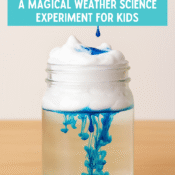
pH Indicator Balloon Activity: Chemistry Made Visible for Curious Kids
When Chemistry Feels Invisible: How to Make Acids & Bases Come Alive
Science is fascinating… until it becomes invisible. Many parents and teachers struggle with this classic chemistry dilemma: How do you help kids “see” chemical reactions when they don’t naturally produce smoke or explosions?
That’s where this colourful, hands-on experiment comes in.
With just a cabbage, a balloon, and a little baking soda, your child can see pH in action — watching the balloon inflate as chemical reactions release gas, and observing vibrant colour changes that reveal whether a substance is acidic or basic.
It’s science they can hold, stretch, and pop.
What’s a pH Indicator, and Why Should Kids Learn About It?
The Theory Behind the Fun
pH is a measure of how acidic or basic a solution is. It’s a foundational concept in chemistry and environmental science — from testing soil health to understanding how our bodies work.
Red cabbage contains a natural pH indicator — anthocyanin — that changes colour based on the pH of the substance it touches:
- Acidic → Pink/Red
- Neutral → Purple
- Basic → Green/Blue
This makes cabbage juice an ideal (and safe) homemade science tool.
By combining it with the classic baking soda + vinegar reaction, we get a two-for-one experiment:
- A chemical reaction that inflates a balloon with carbon dioxide
- A visible pH colour change showing how acids and bases behave

Step-by-Step: How to Do the pH Indicator Balloon Activity
Materials You’ll Need
- Red cabbage
- Water
- Vinegar (acid)
- Baking soda (base)
- Funnel or spoon
- Balloon
- Clear bottle or jar (with narrow opening)
- Cup and bowl
- Optional: safety goggles, measuring spoons
Prep Your Natural pH Indicator
- Chop red cabbage into small pieces and place in a bowl.
- Pour hot water over it and let steep for 10–15 minutes.
- Strain to collect the purple liquid — your natural pH indicator.
The Main Experiment
- Pour ½ cup of cabbage indicator liquid into a clear bottle or jar.
- Add 2 tablespoons of vinegar to the bottle. The colour will turn reddish (acidic).
- In a separate bowl, fill the balloon with 1 tablespoon of baking soda using a funnel or spoon.
- Carefully stretch the balloon over the bottle mouth without letting the baking soda fall in yet.
- Once sealed, lift the balloon and let the baking soda drop into the liquid.
- Watch the balloon inflate from the gas, and the liquid change colour to blue/green!

What’s Happening?
- The vinegar (acid) and baking soda (base) react to produce carbon dioxide (CO₂) gas, which fills the balloon.
- As the pH changes from acidic to basic, the cabbage juice changes colour — a vivid visual of chemical interaction.
Quick Variants to Try
- Mystery Liquid Challenge – Add other kitchen liquids (lemon juice, soap water, soda) and let kids guess if they’re acid or base based on colour change.
- Balloon Comparison Race – Test different balloon sizes or baking soda amounts and see which inflates fastest.
- pH Rainbow Bottles – Line up different pH liquids (with cabbage juice) in cups to create a rainbow effect.
What Kids and Parents Are Saying
“My son couldn’t stop staring at the colour shift. He made his own ‘science station’ to try more liquids.” — Julia, SA
“It’s so helpful when science feels like a game. This balloon activity was the first time my daughter asked what ‘acid’ means!” — Dave, QLD
Extend the Learning
To reinforce the concepts, guide your child to:
- Sketch the before and after colours in a notebook
- Label each balloon test with results: Acid/Base/Neutral
- Look up the pH scale online and find examples in real life
It’s a great bridge into more advanced chemistry later on.
Download the Full pH Balloon Activity Kit (PDF)
Included:
- pH Colour Chart (Cabbage Indicator)
- Balloon Inflation Reaction Sheet
- Mystery Liquid Testing Log
- Printable Award: “Junior pH Chemist”
- Substitution Guide for classroom-safe materials
Click to download the full printable kit (PDF)
FAQ: Parents’ Top Questions
Q: Can I use something other than cabbage juice?
A: Yes — turmeric or beet juice can also work as natural indicators, but cabbage is the most colour-dynamic.
Q: What if the balloon doesn’t inflate much?
A: Make sure your vinegar is fresh and the baking soda is dry. Try adding more for stronger reactions.
Q: Is this safe for young kids?
A: Yes! Everything is food-safe. You can supervise and avoid contact with eyes to keep it extra safe.
Related Activities You’ll Love
Best for Ages: 6–10
Explore more in our Hands-On Science Archive
Science You Can See
Children are more likely to remember science when it’s visual, messy, and colourful. The pH Indicator Balloon Activity checks every box — mixing chemistry with play.
So next time your child asks what “acid” means, don’t just tell them. Show them.




